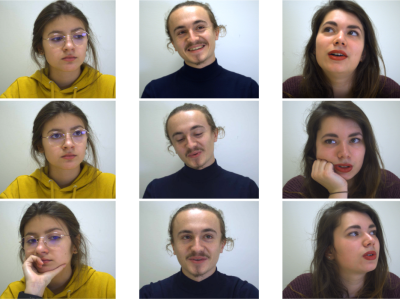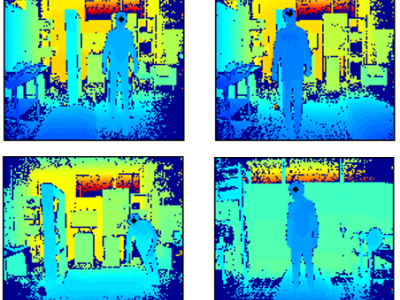Multi-channel Near Infrared Tof Response Images of Five Materials
- Citation Author(s):
- Submitted by:
- Santosh Kumar Kasam
- Last updated:
- DOI:
- 10.21227/0142-7561
- Data Format:
 183 views
183 views
- Categories:
- Keywords:
Abstract
Conventionally, the texture of the object is used for material imaging. However, this method can mistake an image of an object, for the object itself. This dataset furthers a new and more relevant method to classify the material of an object. This data is richer, compared to RGB images, because the time of flight responses correlate with the material property of an object. This makes the features, thus extracted, more suitable to infer the material information. It provides near-infrared multifrequency (Range: 20MHz to 160MHz; step-size: 20Mhz) Time of Flight response images of objects from 10 different distances ranging from 40cm to 60cm and at 7 different orientations ranging from -30 degrees to + 30 degrees. This dataset contains images of five different objects, where each image contains only one object, and each object is made of unique materials. The five materials are Melamine Panel, Polystyrene, Bubble Wrap, Paper and Wax. The images are acquired using a Photonic Mixer Device (PMD) Selene module. PMD Selene module is a low-power multifrequency time of flight camera. The images are acquired in a near-dark room to avoid ambient light interference.
Instructions:
# Dataset details #
The dataset contains 3 files:
1. material_rec_five_materials_PB-H0106_steps_dataset_n_setups=50_n_inst_per_setup=7_n_avg_frames=25_condensed.zip:
This .zip file contains "material_rec_five_materials_PB-H0106_steps_dataset_n_setups=50_n_inst_per_setup=7_n_avg_frames=25_condensed.mat" file inside.
This .mat file contains a cell named "dataset". The shape of the cell is [5, 70]. Each row belongs to a material. Each column represents a unique instance. The instances vary in distance and angle of orientation of the object. There are 10 different distances (ranging from 40cm to 60cm, step size 2cm) and 7 different orientations (ranging between -30 degrees to +30 degrees, step size: 10 degrees) from which the images are acquired. Therefore, 10 distances and 7 orientations result in 70 instances per material.
2. material_pixel_ranges_5_mat.xlsx:
The objects are held infront of an obsorptive material. Only a limited region in the image belongs to the object, while the rest belongs to the background. This file "material_pixel_ranges_5_mat.xlsx" contains the pixel ranges of the object in each image.
3. material_list_fancy_5.xlsx:
This file contains the labels of the materials. rows 1 to 5 contain the material names of the objects in rows 1 to 5 in the "dataset" cell of "material_rec_five_materials_PB-H0106_steps_dataset_n_setups=50_n_inst_per_setup=7_n_avg_frames=25_condensed.mat" file.
# Access #
Use the load("file_name.mat") instruction in the MATLAB to access the images in the "dataset" cell in the "material_rec_five_materials_PB-H0106_steps_dataset_n_setups=50_n_inst_per_setup=7_n_avg_frames=25_condensed.mat" file
###################################################








